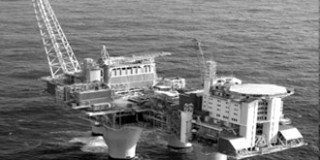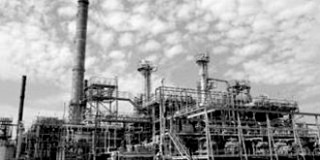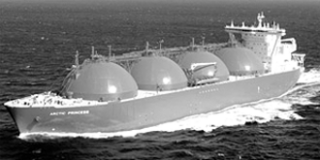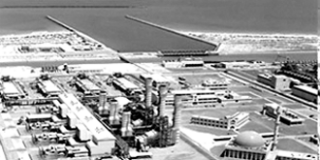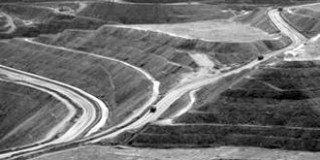Duplex Stainless Steel
Special Piping Materials is well known for the high-quality Duplex products that we source and stock for our discerning clients around the world. We can provide a whole range of different products in duplex, including specialist fittings & flanges, pipe, plate, sheet, tube and bar.
For more information about our Duplex Stainless Steel range of products, please contact your local Special Piping Materials sales adviser today.
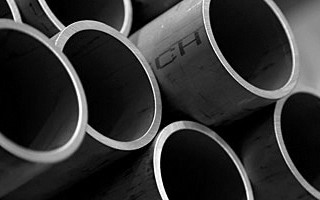
Duplex from Special Piping Materials
Duplex stainless steel is a very useful metal that is used the world over. It gets its name from the fact that it consists of two different grades of metal.
Essentially, Duplex is a Fe-Ni-Cr alloy that has a two-phase ferritic-austenitic stainless-steel microstructure when it is at room temperature.
Duplex steels are characterised by high chromium (19–28%) and molybdenum (up to 5%) and lower nickel contents than austenitic stainless steels. The most used duplex stainless steels are the 2205 (22% Chromium, 5% Nickel) and the 2507 (25% Chromium, 7% Nickel); 2507 is known as “super duplex” due to its higher resistance to corrosion.
The advantage of combining ferritic and austenitic grades is that the resultant metal has a metallurgical structure that consists of two phases and therefore benefits from the properties of both microstructures.
These properties make duplex steel highly sought after in heavy industries, like oil and gas nuclear and chemical processing.
Creation of Duplex
The origin of Duplex steels can be traced back to the 1920s, with the first cast being made in Sweden in 1930. However, the popularity of using duplex only started to rise around 30 years ago when steelmaking technology became more advanced.
The two types of metals used to make Duplex – austenitic and ferritic – are both fit for purpose in many types of scenarios but they both have weaknesses that prevent them from being used more widely.
Austenitic has a low strength and a low resistance to stress corrosion cracking, while ferritic also has a low strength, poor weldability and poor low temperature toughness.
Producing a chemical composition that combines austenitic and ferritic results in a metal that has a higher strength, good weldability, good toughness and resistance to stress corrosion cracking.
The high strength of duplex stainless steel means that The range of 0.2% PS for current duplex grades is from 400 – 550 MPa. This can lead to reduced section thicknesses and, subsequently, reduced weight. This advantage is particularly significant for applications such as pressure vessels, storage tanks and structural Applications like bridges.
However, one of the negatives is that Duplex is brittle at extreme temperatures which means that its use is normally restricted to a maximum temperature of 300 degrees and minimum temperature of –50 degrees.
When creating duplex stainless steels, the aim is to produce a 50/50 mixed microstructure of austenite and ferrite metals, although, in commercial alloys, the mix may be 40/60 respectively.
Interestingly, it is considered that we are still very much in the development phase of duplex steels, as different ratios of austenitic vs ferritic metals are still being tested.
Advantages of Duplex
Duplex stainless steel has an array of various benefits such as:
- Strength:Duplex stainless steels have approximately double the strength of regular austenitic or ferritic stainless steels.
- Toughness and ductility:Duplex stainless steels exceed the toughness and ductility of ferritic grades although they are not as touch as austenitic grades.
- Corrosion resistance:As with all stainless steels, corrosion resistance depends mostly on the composition of the stainless steel, with chromium, molybdenum and nitrogen content being the most important. Duplex stainless steels are extremely corrosion resistant and even in chloride and sulphide environments, duplex stainless steels exhibit very high resistance to stress corrosion cracking (SCC). SCC is a type of corrosion that takes place when a particular set of factors are present: Tensile stress, corrosive environment and a sufficiently high temperature.
- Heat Resistance: Duplex stainless steel has higher heat conductivity and lower thermal expansion than austenitic steels. Duplex grades can easily be used down to temperatures of at least -50°C because at low temperatures they have better ductility that ferritic grades of steel.
- Cost:Duplex stainless steels have lower nickel and molybdenum contents than their austenitic counterparts. This lower alloying content means that duplex stainless steels can be lower in cost. Further to this, it is also possible that the thickness of duplex stainless steel can be reduced as it has an increased yield strength. Thinner products mean that significant weight savings can be made.
- Weldability: Duplex stainless steels tend to have good weldability and all standard welding processes can be used although they are not quite as easily welded as the austenitic grades.
Applications of Duplex
The extensive benefits of Duplex stainless steel mean that it can be used in many different applications such as:
- Chemical processing, transport and storage
- Pipes for production and transportation of oil and gas
- Oil and gas exploration and offshore rigs
- Oil and gas refining
- Marine environments
- Pollution control equipment
- Pulp & paper manufacturing
- Chemical process plant
- Structural and mechanical components
- Heat exchangers
- Cooling pipes
Learn More About Duplex & Super Duplex
All Posts, Duplex & Super Duplex, Industries
Floating Production, Storage, and Offloading (FPSO) vessels have revolutionised offshore oil and gas production by offering a flexible, cost-effective, and environmentally friendly solution to extract hydrocarbons from deep-sea reserves. In this blog, we will dive ... Read More
All Posts, Duplex & Super Duplex, Materials
The metallurgy of duplex stainless steel is very interesting indeed. It is made from two different grades of metal (ferritic and austenitic), and it therefore benefits from the properties of both microstructures. The metallurgy of ... Read More
All Posts, Duplex & Super Duplex, Industries
What are the components of an FPSO? Firstly, ‘FPSO’ stands for ‘Floating Production Storage and Offloading’ and is essentially a floating vessel that is used for the production, storage, transportation and delivery of crude oil. ... Read More
TESTING
All Stock held by Special Piping Materials tested in accordance with respective ASTM standards.
BROCHURE
All Stock held by Special Piping Materials tested in accordance with respective ASTM standards.



 Português do Brasil
Português do Brasil![[:en]Materials[:pt]MATERIAIS[:]](https://specialpipingmaterials.com/wp-content/uploads/2015/11/Materials-1300x250.jpg)
